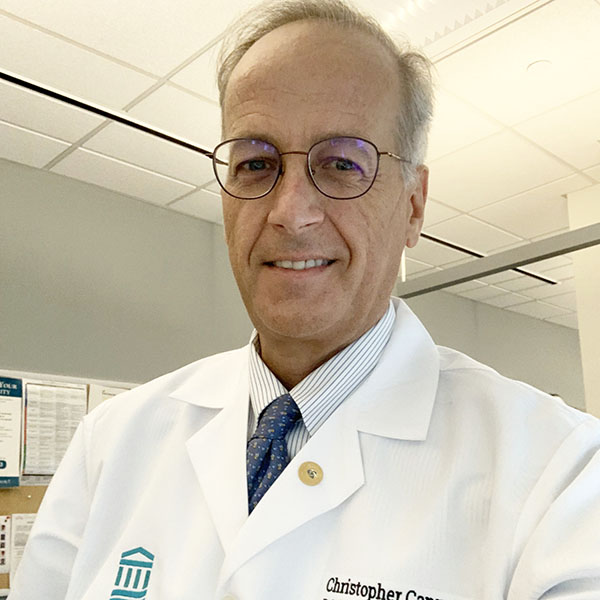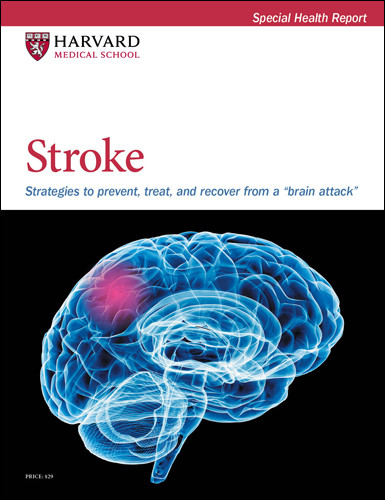Raising awareness about aortic disease
New guidelines highlight the risks and screening recommendations for conditions affecting the body’s largest blood vessel.
- Reviewed by Christopher P. Cannon, MD, Editor in Chief, Harvard Heart Letter; Editorial Advisory Board Member, Harvard Health Publishing

The aorta — the conduit that carries blood from the heart to the body — is a bit wider than a garden hose where it emerges from the heart. This thick-walled vessel curves up and over the heart in a gentle arc, narrowing slightly as it extends down through the center of the body. As is true for most heart problems, smoking and high blood pressure can heighten the risk of problems with the aorta. But so can genes and certain medical conditions, which can weaken the wall of the aorta. As a result, the aortic wall may tear (aortic dissection) or bulge outward (aortic aneurysm) and possibly rupture.
Although aortic disease is far less prevalent than many types of heart disease, a ruptured aortic aneurysm is often life-threatening. That’s why early detection, monitoring, and treatment of aortic disease are vital. "There’s a real need for greater awareness about aortic disease, not just among the general public but also among physicians, who may not appreciate the risk factors and screening recommendations," says Dr. Eric Isselbacher, co-director of the Thoracic Aortic Center at Massachusetts General Hospital. He chaired the writing committee for the updated American College of Cardiology/American Heart Association guidelines for aortic disease, published in November 2022.
Types of aortic aneurysms
About three-quarters of all aortic aneurysms occur in the center of the body, below the kidneys. Known as abdominal aortic aneurysms (AAAs), most grow very slowly and don’t cause any symptoms. But an undiscovered one can expand rapidly and burst with little warning. Screening involves a simple, one-time abdominal ultrasound, which the guidelines recommend for people at greatest risk: (1) anyone with a family history of an AAA, and (2) men ages 65 to 75 who have smoked at least 100 cigarettes over the course of their lives.
Aneurysms in the chest area (thoracic aortic aneurysms, or TAAs) are classified by location. Those in the descending aorta (the section after the arch of the aorta) are more common in older people who smoke and have high blood pressure. Aneurysms in the ascending aorta (the section closest to the heart) usually occur in younger people and may be linked to certain genetic conditions, including a bicuspid aortic valve, in which the valve has only two flaps instead of the usual three. About one in every 100 people has a bicuspid aortic valve, and half of them have an enlarged aorta, says Dr. Isselbacher. (See "Who should be checked for a thoracic aortic aneurysm?")
Who should be checked for a thoracic aortic aneurysm?A heart ultrasound (echocardiogram) can be used to screen for a TAA, but make sure the report includes a measurement of both the aortic root (where the vessel emerges from the heart) and the ascending aorta, advises Harvard cardiologist Dr. Eric Isselbacher. CT scans are also used for TAA screening. You should be tested for a thoracic aortic aneurysm if you
|
Family history uncertainties
If a person has a thoracic aneurysm, there’s a 20% chance that another family member also has one. However, people don’t necessarily know the details of their family’s health issues. "Someone will say, ‘I think my father died of a massive heart attack — he clutched his chest, collapsed, and died before he got to the hospital,’" says Dr. Isselbacher. Without an autopsy (which is uncommon), it’s impossible to know the underlying cause, which could have been a ruptured thoracic aneurysm, he adds. The guidelines now consider anyone with an aneurysm and a family member who experienced sudden death before the age of 50 to be at increased risk for an aortic rupture.
The risk of a rupture increases as an aneurysm grows, so people with known aneurysms need periodic imaging tests to check the size. If it reaches a certain threshold (which varies depending on the person), a surgical repair procedure may be recommended, ideally done at a major medical center with a team of aortic disease specialists, says Dr. Isselbacher.
Image: © chombosan/Getty Images
About the Author

Julie Corliss, Executive Editor, Harvard Heart Letter
About the Reviewer

Christopher P. Cannon, MD, Editor in Chief, Harvard Heart Letter; Editorial Advisory Board Member, Harvard Health Publishing
Disclaimer:
As a service to our readers, Harvard Health Publishing provides access to our library of archived content. Please note the date of last review or update on all articles.
No content on this site, regardless of date, should ever be used as a substitute for direct medical advice from your doctor or other qualified clinician.













